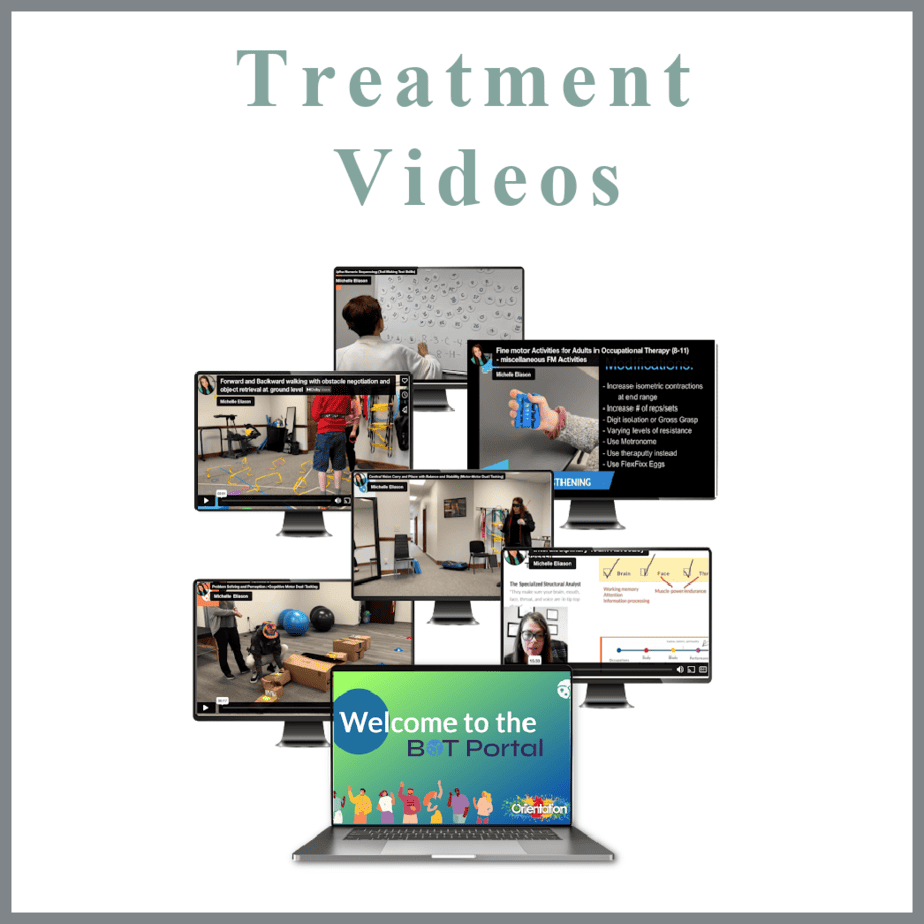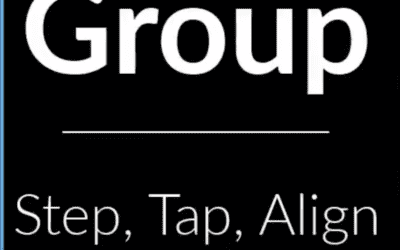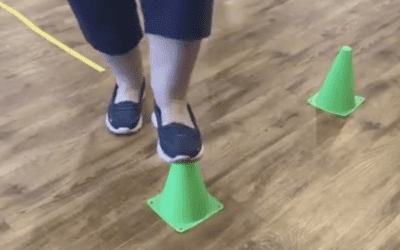

OT Goals for Therapeutic Exercise
Therapeutic exercise in occupational therapy focuses on enhancing physical function, strength, endurance, power, and flexibility to support individuals in their daily activities and occupational roles. Here’s how therapeutic exercise relates to occupational performance:
Strength Training: Occupational therapists prescribe strength training exercises to improve muscle strength and power, enabling individuals to perform functional tasks with greater ease and efficiency. These exercises target specific muscle groups involved in activities such as lifting, carrying, pushing, and pulling, helping individuals build the strength needed to participate in activities of daily living (ADLs), work tasks, and leisure pursuits.
Endurance Conditioning: Therapeutic exercise interventions include endurance conditioning exercises to improve cardiovascular fitness and stamina, allowing individuals to sustain physical activity over longer periods without fatigue. These exercises may involve aerobic activities such as walking, cycling, or swimming, as well as interval training or circuit training to gradually increase endurance levels and support participation in occupational activities requiring prolonged exertion.
Power Training: Occupational therapists incorporate power training exercises to improve explosive strength and quick, forceful movements needed for activities such as lifting, reaching, and transitioning between positions. These exercises focus on generating maximum force in a short period, enhancing functional performance in tasks requiring rapid acceleration or deceleration, such as catching a falling object or rising from a chair.
Flexibility and Range of Motion Exercises: Therapeutic exercise programs include flexibility and range of motion exercises to improve joint flexibility, mobility, and range of motion, facilitating smooth and efficient movement during daily activities. These exercises involve stretching muscles and connective tissues to increase flexibility, reduce stiffness, and enhance overall movement quality, allowing individuals to perform tasks with greater comfort and ease.




Membership Perks
Two Membership Options!
Your investment gives you resources to save you stress, self-doubt, and burnout as you become a confident and competent practitioner who can stand up for your professional point of view and scope of practice.
6 Videos on Applied Kinesiology for Occupational Therapy
Directions: In the upper left corner of the video, you can click arrows that move you through each video that may be relevant to you.
Simple Goals for Therapeutic Exercise
The patient will demonstrate increased [UE / LE] AROM as evidenced by an increase of [xx] degrees in [specific osteokinematic movements] within [xx] weeks.
The patient will demonstrate an understanding of current functional deficits and the correct course of action to improve and enhance safety and independence by verbally and physically demonstrating home exercises program assigned to perform in conjunction with in-person therapeutic intervention within [xx] weeks.
The patient will demonstrate improved functional strength as evidenced by an improvement of [MMT/Pinch gauge/Dynamometer] of [arthrokinematic movement pattern] from xx to xx within xx weeks.
The patient will demonstrate increased aerobic capacity/endurance as evidenced by an increase from 15-minute task performance at MET Level [xx] to a 15-minute task performance at MET Level [xx] without s/s of fatigue, pain, or duress with [xx] weeks.
Goals Continuums and Progressions for Therapeutic Exercise
Lower Extremity Functional Scale
The patient will demonstrate an improvement in occupations of the lower extremities as evidenced by an increase of 60 points on the LEFS within 18 weeks.
Deficits: All activities are extremely difficult or quite a bit difficulty
Checkpoints:
- (4.5 weeks) Improvement by 15 points – 25%
- (9 weeks) Improvement by 30 points – 50%
- (13.5 weeks) (Improvement by 45 points – 75%
- (18 weeks) Improvement by 60 points – 100%
Health Assessment Questionnaire and Hand Strength
The patient will demonstrate an improvement in functional hand strength with functional translation using lumbricals and interosseous muscles as evidenced by improved score on Health Assessment Questionnaire (HAQ) and collaborative clinical discussion.
Checkpoints:
- Completion of HAQ assessment (25%)
- 6 weeks = Improved hand strength of any degree (50%)
- 12 week = Improved or maintained hand strength based on 6 week outcome & Increase of HAQ outcome measure (100%)
Wrist Active Range of Motion
See BOT Portal
Sit to Stand and Gross Motor Coordination
The patient will independently demonstrate improved gross motor coordination as evidenced by the successful completion of 10 sit to stands with or without external aids using good body mechanics to increase independence in activity of daily living.
Checkpoints:
- 4-8 sessions on isolated mechanics during osteo and arthrokinematic recruitment exercises using ther ex and NMRE to perform key BUE components and pelvic and hip movement patterns required for a modified 5 time sit to stand (Gravity eliminated to Against Gravity) (25%)
- 4-6 Task specific trainings using timed 5 times sit to stand with therapist-assistance continuum from Min Ax1 – Supervision (50%)
- 2-3 sessions of education body mechanics, inhibitory strategy, and energy conservation techniques to use during sit to stand performance. Begin executing endurance training for 10 consecutive sit to stands (75%)
- Goal completion 100%
Don Socks Goal
The patient will demonstrate an increase in AROM in all kinematic readings required to don socks and shoes independently without adaptive intervention. Osteokinematic goals are as follows:
Hip Flex/Ext : (Knee )85/-45 (Ankle) 82/-43
Hip Add/Abd : (Knee)17/4 (Ankle) 0/18
Hip Int/Ext Rotation : (Knee ) 7/26 (Ankle) 6/61
Knee Flex/Ext : (Knee )84/-55 (Ankle) 103/-71
Ankle Dorsi/plantar: (Knee )5/19 (Ankle) 5/21
Checkpoints:
- Measure and record all goniometer readings for baseline starting point (25%) while also taking the brief pain inventory and determine areas of deficit
- Improve measurements by at least 33% of combined degrees from initial recording (50%)
- Improve measurements by at least 66% of combined degrees from initial recording (75%)
Home Exercise Program
See BOT Portal
Lower Body Strength and Muscle Stamina
See BOT Portal
Lower Body Active Range of Motion
See BOT Portal




